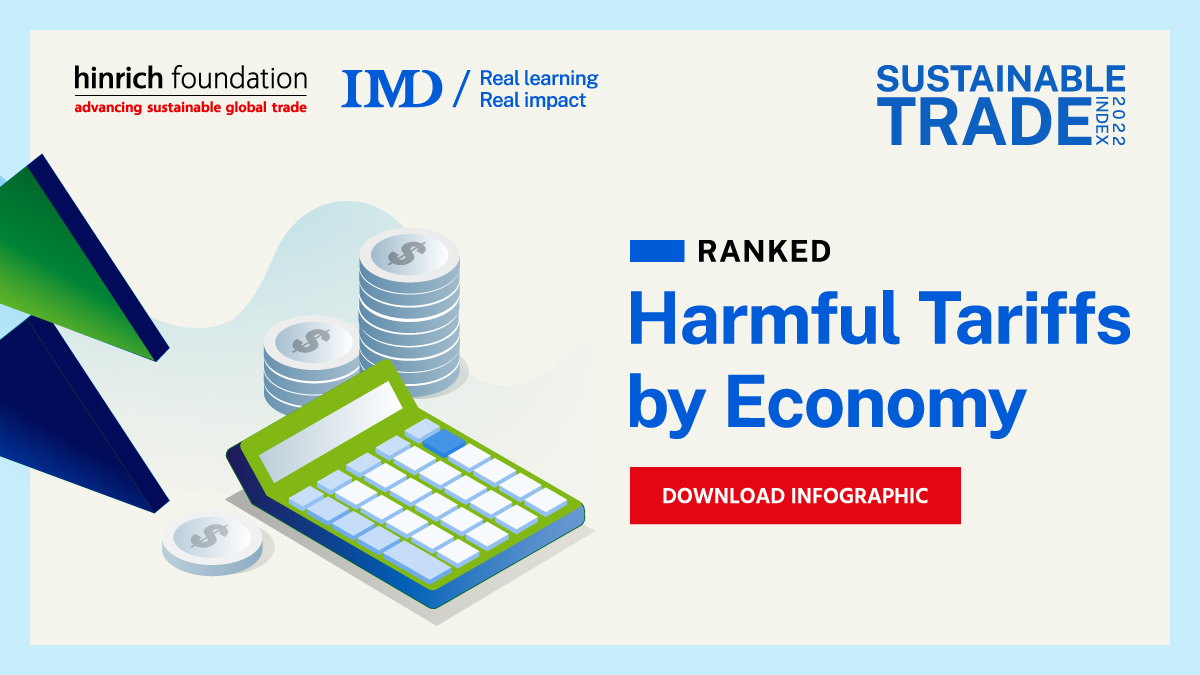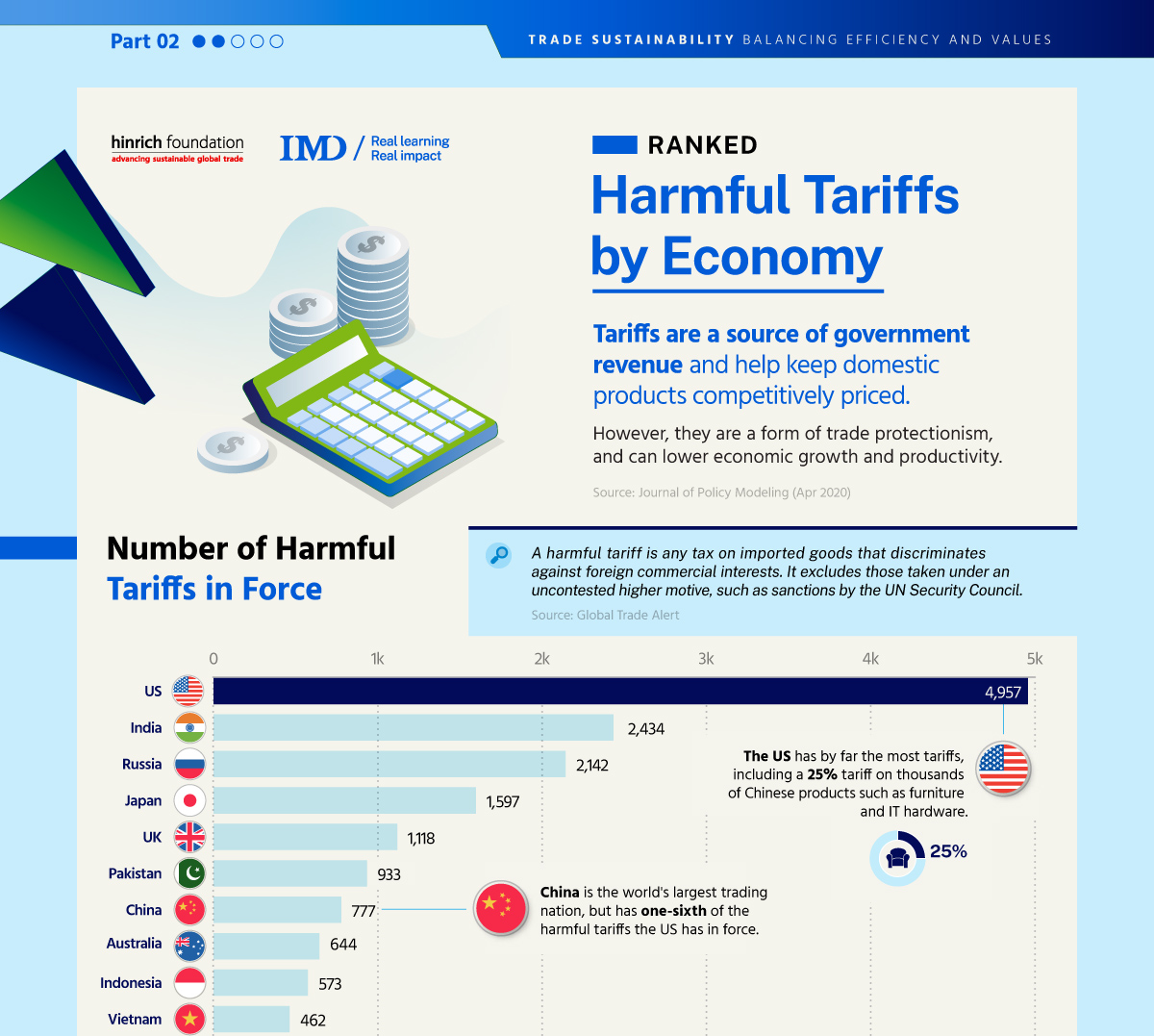Published 10 January 2023
Globalization spurred trade and economic growth over four decades in part by lowering trade barriers worldwide. But as geopolitical conflict rises and the global economy slows, the number of tariffs today have reached an all-time high. We asked the data artists Visual Capitalist to capture the distribution of harmful tariffs currently in force, calling attention to economies that hamper sustainable trade.
(Text by Tavis Tan)
Tariffs are often useful to nurture fledging industries, influence social behavior, and as an important source of state revenue. This was particularly so as rapid globalization saw an increasing gravitation toward cheaper products from abroad. As geopolitical tensions rose, tariffs have increasingly become a tool for trade protectionism, which generally lowers productivity, competition, innovation, and ultimately economic growth. While tariffs may protect the interests of domestic markets, they become harmful when employed to intentionally disadvantage foreign commercial interests.
Today, tariffs have taken centerstage in global trade. Amidst rising US-China competition, Russia’s war with Ukraine, the Covid-19 pandemic, and global inflation, tariffs have been used to control, coerce, and in some instances, punish adversaries. However, the unequal dependence and skewed dominance of global trade means that smaller economies remain at risk of economic coercion by their larger counterparts.
Trade dynamics have shifted overtime. The US dominated the 1960s with its postwar economic boom and the Trade Expansion Act. In the 1990s, China began to emerge as a global competitor and eventually overtook the US as the world’s largest trading nation in 2013.
As strategic competition rose between the two nations, US aggressively raised tariffs across the board. As of 2021, the US has 4,957 harmful tariffs in force – the highest of the 30 economies measured in the Hinrich-IMD Sustainable Trade Index (STI) 2022. The index ranks 30 economies on their capacity to practice sustainable trade, based on a range of economic, social, and environmental measures. The tariff ranking in the index is based on data from Global Trade Alert (GTA), a database that measures global trade interventions.
The US maintains a wide swath of tariffs on imports, including even American autos made in China as well as metals, machinery, footwear, textiles, and tech products. China in comparison has one-sixth the US level at 777, according to GTA. India, Japan, Russia, and the UK are also among the big enforcers of harmful tariffs.
The trend reflects national security increasingly driving the search for economic advantage, resulting in localization and regionalization in trade. Such policies can at times produce unintended results. For example, the US in 2018 imposed a 25% tariff on Chinese bulk semiconductor imports, which inadvertently worsened shortages in America of medical devices during the pandemic, contributed to inflation, and impacted the local manufacturing of cars, refrigerators, and other goods.
While tariffs remain in force, and its application widely debated, the STI report warns that over time, it reduces competition, economic growth, and productivity. In the wider geopolitical context, it may incite greater discord between countries. Officials around the world, and in particular the United States, should pay closer attention to the application and effects of harmful tariffs if they want to build a more sustainable global trade system.
This infographic is part of the Hinrich-IMD Sustainable Trade Index 2022. The Sustainable Trade Index is currently in its fourth edition.
© The Hinrich Foundation. See our website Terms and conditions for our copyright and reprint policy. All statements of fact and the views, conclusions and recommendations expressed in this publication are the sole responsibility of the author(s).


